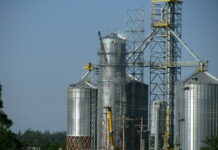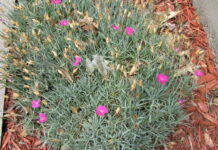Photo credit: DiasporaEngager (www.DiasporaEngager.com).
Results
SARS-CoV-2 RNA Rebound Rates
Demographic characteristics and predominant SARS-CoV-2 variants were similar between nirmatrelvir/ritonavir and placebo recipients within clinical trial EPIC-HR and within the 2021/pre-Omicron and 2022/Omicron periods of EPIC-SR (Supplementary Table, https://stacks.cdc.gov/view/cdc/136166). In EPIC-HR, overall rates of posttreatment viral RNA rebound on day 10 or day 14 were numerically higher in nirmatrelvir/ritonavir recipients than in placebo recipients, with most cases of observed rebound occurring at day 10 (Table 2). At either posttreatment timepoint (i.e., day 10 or day 14), viral RNA rebound rates in nirmatrelvir/ritonavir and placebo recipients were 8.3% (77 of 925) and 5.7% (53 of 922), respectively (p = 0.036). When the analysis was restricted to subjects with a virologic response on day 5, the difference between day 10 or day 14 rebound rates among nirmatrelvir/ritonavir and placebo recipients narrowed, and the rates were no longer significantly different (8.1% [69 of 849] and 6.5% [50 of 772], respectively; p = 0.22). In EPIC-SR, viral RNA rebound rates by either analysis approach were not significantly different between nirmatrelvir/ritonavir and placebo recipients across both enrollment periods.
For both trials, when considering a higher threshold for viral RNA rebound (requiring a day 10 or day 14 viral RNA ≥5 log10 copies/mL, associated with cell culture infectivity) viral RNA rebound rates remained similar for nirmatrelvir/ritonavir and placebo recipients. Further, no consistent differences in viral RNA patterns were observed between nirmatrelvir/ritonavir and placebo recipients with viral RNA rebound (Supplementary Figure, https://stacks.cdc.gov/view/cdc/136167). In the analysis of EPIC-HR data, viral RNA rebound during the treatment period was frequently observed, with rates numerically higher than posttreatment rebound rates (Table 2).
Hospitalization, Immunosuppression, and Antiviral Resistance Among Study Subjects
Viral RNA rebound was generally not associated with COVID-19–related hospitalization or death from any cause through day 28. Among subjects in EPIC-HR with viral RNA rebound, 1.3% (one of 77) of nirmatrelvir/ritonavir recipients and 5.7% (three of 53) of placebo recipients had a COVID-19–related hospitalization, without death, comparable with overall hospitalization rates in the trial.** In EPIC-SR, three subjects (one nirmatrelvir/ritonavir and two placebo recipients; 2021/pre-Omicron period) had viral RNA rebound and a COVID-19–related hospitalization. Analyses of viral RNA levels showed no consistent temporal relationship between viral RNA rebound and hospitalization (Figure). Viral RNA rebound was not associated with immunosuppression; however, only 13 subjects in EPIC-HR were immunosuppressed, including six nirmatrelvir/ritonavir recipients (none with rebound) and seven placebo recipients (one with rebound).
Among 59 nirmatrelvir/ritonavir recipients in EPIC-HR with viral RNA rebound for whom viral sequencing data were available, two (3%) had a treatment-emergent, nirmatrelvir resistance–associated substitution detected in Mpro on day 10 (Figure). Neither subject was immunosuppressed at baseline or hospitalized because of COVID-19.
SARS-CoV-2 RNA Levels at Individual Timepoints
Across both trials, for all subjects irrespective of viral RNA rebound by any definition, a similar or higher percentage of nirmatrelvir/ritonavir recipients than placebo recipients had viral RNA below the lower limit of quantification (LLOQ) at all postbaseline visits, indicating nirmatrelvir/ritonavir treatment was not associated with delayed viral clearance overall (Table 2). Likewise, a similar or lower percentage of nirmatrelvir/ritonavir recipients than placebo recipients had viral RNA ≥5 log10 copies/mL at all postbaseline visits.
Source of original article: Centers for Disease Control and Prevention (CDC) / Morbidity and Mortality Weekly Report (MMWR) (tools.cdc.gov).
The content of this article does not necessarily reflect the views or opinion of Global Diaspora News (www.GlobalDiasporaNews.com).
To submit your press release: (https://www.GlobalDiasporaNews.com/pr).
To advertise on Global Diaspora News: (www.GlobalDiasporaNews.com/ads).
Sign up to Global Diaspora News newsletter (https://www.GlobalDiasporaNews.com/newsletter/) to start receiving updates and opportunities directly in your email inbox for free.


































